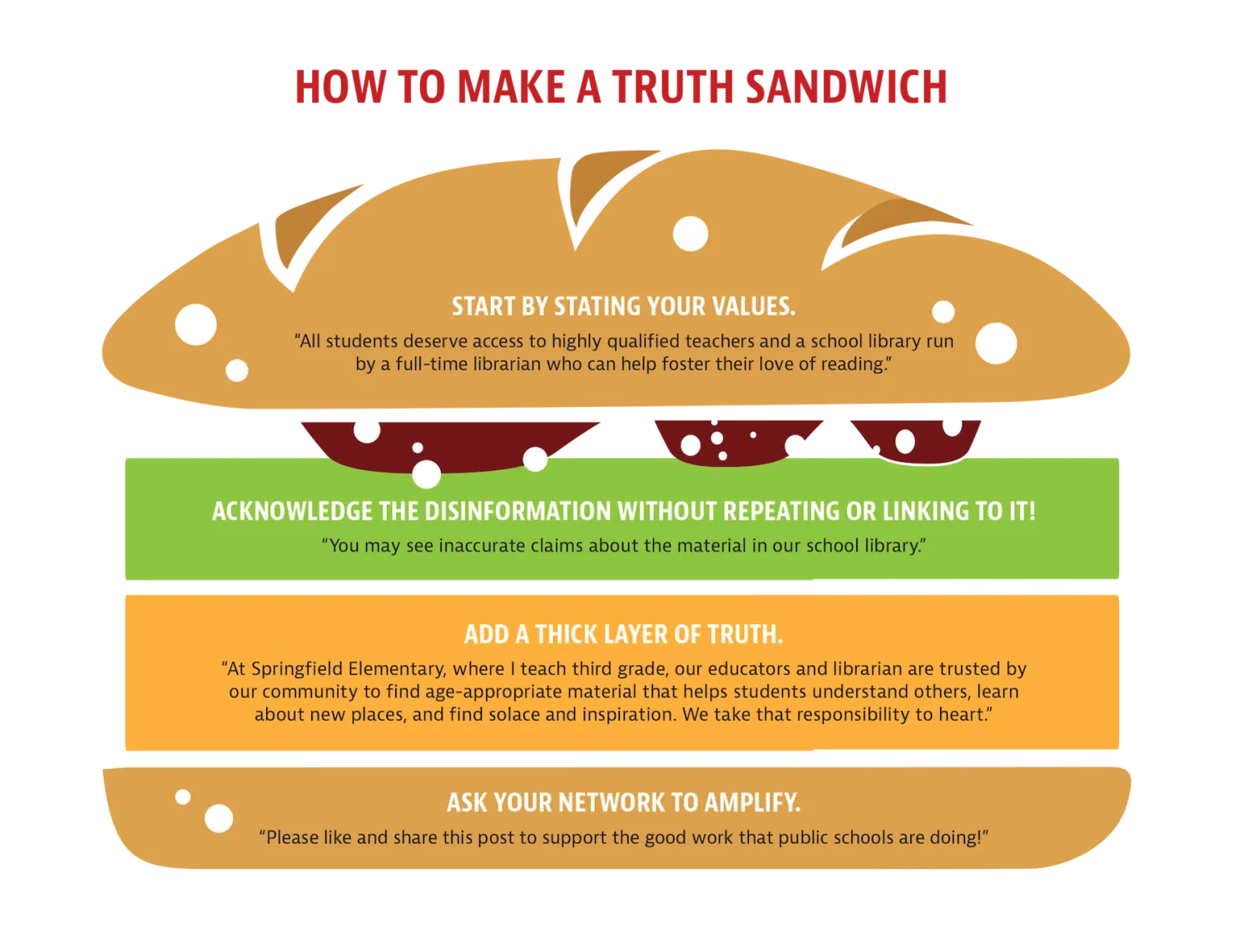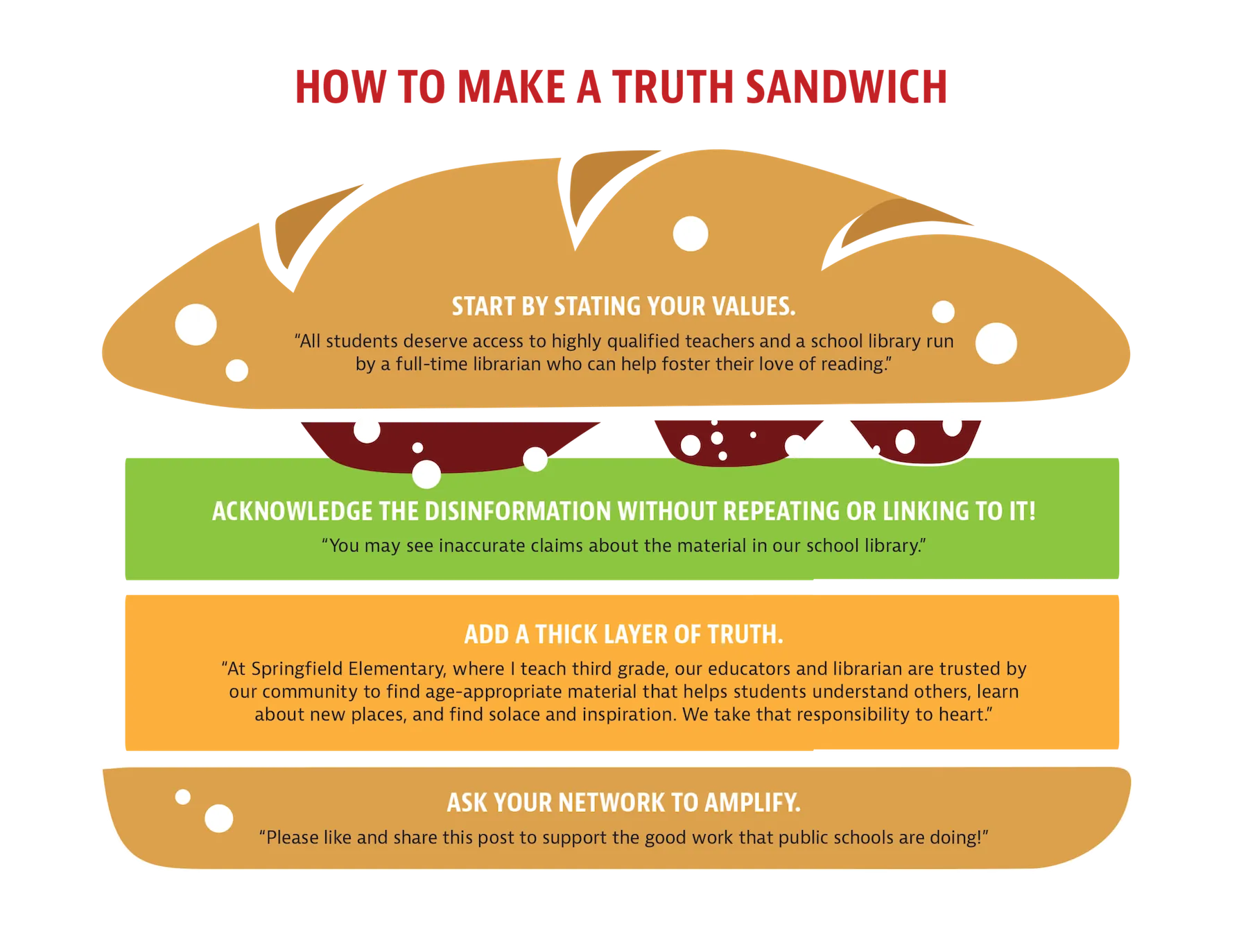
Consider how you would respond in this scenario: You come across a Facebook post that talks about your school, but the facts are all wrong.
The post—which has dozens of shares—claims that the school library is stocked with inappropriate titles for your elementary students, which you know to be false.
Should you:
a) Comment on the Facebook post to debunk the false narrative;
b) comment on the article itself; or
c) both?
It turns out that often, the best thing to do is none of the above, says Katie O’Connell, a specialist in NEA’s Center for Communications with expertise in countering false information. “When you interact with disinformation online, it gets a boost from the platform’s algorithm,” she explains.
“Of course, educators want to correct false claims about public schools—but we have to be careful about how we do that to make sure we aren’t inadvertently giving the false narratives more credibility,” O’Connell says.
Anti-public education and anti-union forces often circulate disinformation online that pushes false narratives. The goal? To undermine trust in public schools, educators, and unions. This can harm our schools—and our democracy!
So, what can you do to get the truth out there? Read on for step-by-step advice from O’Connell on how to evaluate and counter disinformation.
Help stop the spread of "fake news" about public schools!

